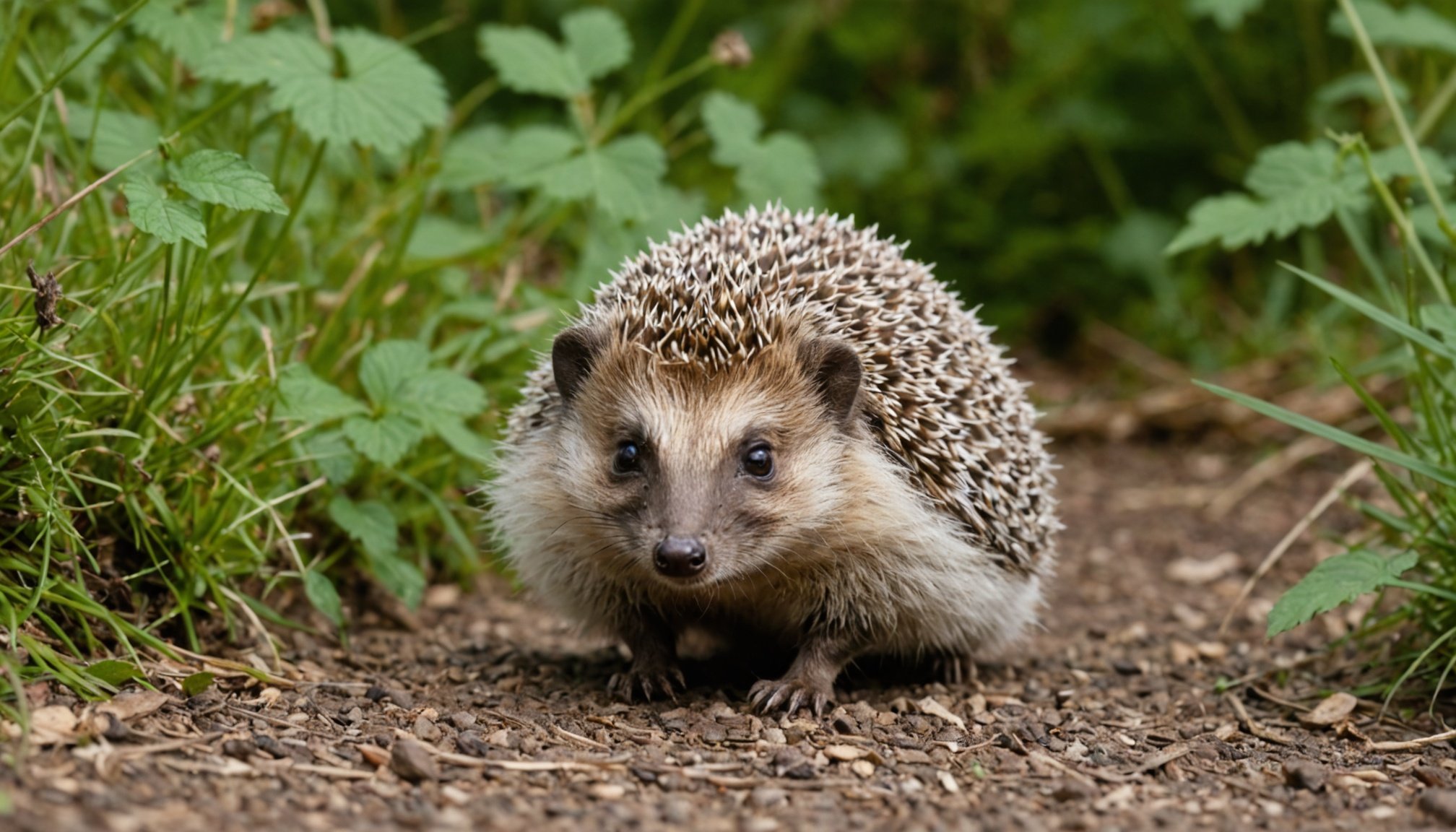Overview of UK Hedgehog Research
The hedgehog research conducted in the UK is a crucial component of urban ecology and aims at understanding and addressing the conservation challenges faced by hedgehog populations. One primary objective of these studies is to assess how urban environments affect hedgehogs, providing insights into their survival and adaptability amidst urbanization. The various research goals encompass a detailed examination of habitat use, dietary patterns, and behaviours that are influenced by rapidly changing surroundings.
Years of urban growth have resulted in fragmented habitats, presenting significant challenges for hedgehogs. These tiny mammals often struggle to navigate the patchwork of urban settings, impacting their populations. The decline is attributed to varied factors such as road traffic, reduced access to natural food sources, and insufficient nesting areas. As a result, understanding these dynamics is critical.
Also to read : Preserving the past: a deep dive into the uk”s initiatives and strategies for protecting ancient trees
The emphasis on hedgehog research extends beyond mere academic interest. This work is vital for wildlife conservation efforts, offering practical solutions to mitigate risks faced by hedgehogs. It informs policy-makers and urban planners on the significance of integrating wildlife-friendly designs within urban developments. This study underscores the necessity of balancing human progress with wildlife conservation, ensuring sustainable habitats for hedgehogs and preserving biodiversity within city landscapes.
Key Findings from the Study
Understanding the dynamics of hedgehog population trends within urban environments has unveiled significant patterns. Statistical insights from the study reveal a marked decline in hedgehog numbers across numerous urban landscapes, attributed in large part to fragmented habitats and increased road fatalities. These urban environments have drastically altered hedgehog behaviour, necessitating adjustments in their habitat use and survival strategies.
Have you seen this : Ultimate guide for uk homeowners: crafting perfect bat boxes tailored for your local environment
The study highlights how hedgehogs in various urban settings have adapted their behaviour patterns, with notable tendencies toward nocturnal activity to avoid human threats. This shift highlights the impact of urban pressures on natural instincts. Diminished access to food sources and safe nesting sites further complicates their survival. Hedgehogs have developed unique survival mechanisms, often favouring more secluded and fragmented spaces.
The key findings emphasize the pressing need to address these challenges as urban sprawl continues. By understanding these trends, conservationists and urban planners can better strategize to mitigate the adverse impacts on hedgehogs. Encouragingly, the study provides a foundation for potential restoration efforts, integrating sustainability within urban ecology to better accommodate and protect these charming yet vulnerable creatures.
Research Methods Employed
Exploring the research methods adopted for this crucial study offers insights into the rigorous processes involved. The methodology was meticulously crafted to ensure accurate data collection, reflect the study’s objectives, and generate valuable insights into the urban lives of hedgehogs.
Study Design
The study incorporated a diverse range of urban settings, from parklands to suburban backyards, allowing robust analysis across varied environments. Researchers aimed to capture how different urban landscapes influence hedgehog populations.
Data Collection Techniques
Carefully chosen data collection techniques augmented the study’s reliability. Utilising GPS tracking devices, researchers mapped hedgehog movements, uncovering patterns in habitat usage and movement across urban spaces. Motion-sensor cameras provided visual records, capturing hedgehog behaviour at various times and locations, further enhancing data integrity.
Analysis Approaches
Quantitative and qualitative analysis techniques were employed, ensuring comprehensive evaluation of collected data. Statistical models were used to assess population trends and survival strategies. In contrast, thematic analysis helped elucidate behavioural adaptations. The research methods thus facilitated an accurate understanding of urban pressures on hedgehogs, forming the backbone of subsequent conclusions.
The integration of diverse tools and methods underscores the importance of precision in urban studies, laying a solid foundation for future investigations into wildlife dynamics within city landscapes.
Implications for Urban Wildlife Conservation
Urban hedgehog research opens a window into the dynamic relationship between urban wildlife and developing cities. The study’s results significantly influence existing conservation strategies. With the rise of urbanization, traditional methods of conservation are being re-evaluated, directing focus towards integrating sustainability within urban planning. Here are some key strategies derived from the research:
-
Encourage green passages in cities, connecting fragmented hedgehog habitats. Such connections will enhance hedgehogs’ ability to roam safely and access essential resources.
-
Promote community involvement, crucial for success. Residents can actively create hedgehog-friendly gardens and support local habitat restoration projects, fostering an environment where these mammals thrive.
Urban planning must evolve to address wildlife needs, influencing policies aiming for balanced wildlife conservation and urban development. Such policies advocate for reduced road hazards and increased green spaces, meeting the safety and ecological requirements of urban-dwelling hedgehogs.
These findings push us beyond seeing hedgehogs simply as fauna within cities. They remind us of our role in nurturing urban ecosystems and ensure such lessons inform ongoing and future developments. Through increased awareness and adaptation, the harmonious coexistence of humans and hedgehogs becomes a realistic and rewarding goal.
Suggested Wildlife Protection Measures
Ensuring hedgehog safety within urban landscapes is a priority that involves thoughtful urban planning and active community engagement. Key measures have been proposed to create sustainable urban habitats conducive to the needs of these vulnerable creatures.
Creating Safe Urban Habitats
Promoting green infrastructure is vital. Incorporating elements such as hedgerows, small woodland areas, and hedgehog-friendly gardens can significantly enhance habitat connectivity. Safe passageways across roads and urban barriers can mitigate the risks posed by traffic, ensuring hedgehogs can traverse their environments without undue danger.
Community Initiatives
The role of community awareness cannot be overstated. Initiatives encouraging residents to participate in local wildlife protection projects, such as creating hedgehog-friendly gardens and participating in educational workshops, empower communities. By fostering a culture of understanding and respect for urban wildlife, communities can help maintain local biodiversity.
Policy Recommendations
To support these efforts, robust policy recommendations are essential. Policymakers should enforce wildlife considerations in urban development plans by including wildlife corridors and reducing habitat fragmentation. Implementing regulations to promote green building practices can further sustain urban ecosystems.
With strategic urban planning, engaged communities, and supportive policies, urban areas can become sanctuaries for hedgehogs and other wildlife, ensuring their continued presence in ever-growing cities.
Quotes and Perspectives from Researchers
This hedgehog research has sparked significant insights and opinions from experts in urban ecology and wildlife conservation. A leading researcher noted, “Understanding hedgehog behaviours in urban environments is crucial for developing effective conservation strategies.” This highlights the role of research in prompting transformation in conservation practices.
Experts stress that while statistical findings showcase alarming trends in hedgehog populations, they also serve as a beacon for action. Another researcher expressed optimism, stating, “The data not only reveal the challenges but also point to potential solutions through focused conservation efforts.”
The importance of collaboration is a recurring theme among researchers. Engaging with urban planners, policymakers, and the wider community is deemed essential. A researcher mentioned, “Efforts to integrate sustainability into urban planning hinge on successful partnerships.” This underscores the collective responsibility needed to protect hedgehog populations.
Future directions for hedgehog studies are poised to delve deeper into specific impacts of urbanisation, such as pollution and climate change. Researchers remain committed to exploring these facets, reflecting a concerted effort towards fostering informed conservation policies. Their perspectives affirm the continued need for innovative approaches and collaborative efforts in wildlife conservation research.









